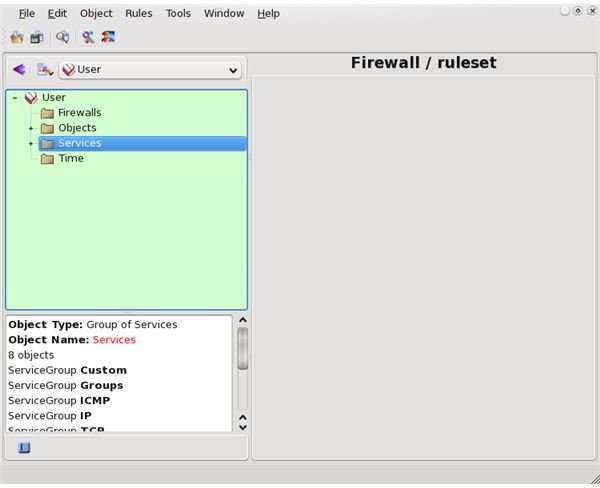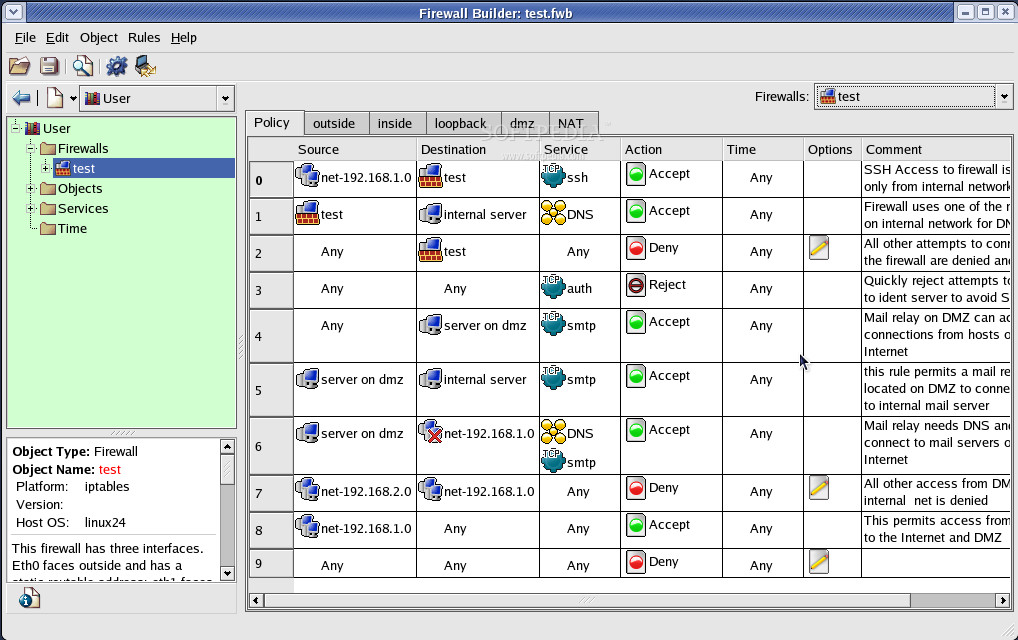
Service or port can be added for a limited amount of time using -timeout= value option passed during addition command. Unfortunately you have to type the entire forward declaration in order to remove it, specifying only the port and the protocol is not enough. This will forward port 12345/tcp on the firewall's public interface to port 22 (standard SSH) on the internal system at IP address 10.20.30.40. If you have firewalld configured on a router, and you have enabled NAT masquerading as above, it is simple to set up port forwarding through firewalld: # firewall-cmd -permanent -policy NAT_int_to_ext -set-target ACCEPT # firewall-cmd -permanent -policy NAT_int_to_ext -add-egress-zone public # firewall-cmd -permanent -policy NAT_int_to_ext -add-ingress-zone internal # firewall-cmd -new-policy NAT_int_to_ext -permanent Since version 1.0.0, to make NAT masquerade working between different firewall zones, you have to create a new policy object which is used to filter traffic between them: # firewall-cmd -zone=public -add-masquerade This command has the same effect as iptables -t nat -A POSTROUTING -j MASQUERADE: To close the port use -remove-port option with same port number and protocol. # firewall-cmd -zone= zone_name -add-port port_num/ protocol Ports can be directly opened on a specific zone. # firewall-cmd -zone= zone_name -remove-service service_name Ports # firewall-cmd -zone= zone_name -add-service service_name # firewall-cmd -info-service service_name Adding or removing services from a zone You can query information about a particular service: To get a list of available services, enter the following command: For example, the ssh service corresponds to SSH and opens ports 22 when assigned to a zone. Services are pre-made rules corresponding to a specific daemon. The default zone can be changed using following command. You can query the name of the default zone using: When a new interface is connected the default zone will be applied. $ nmcli connection modify myssid connection.zone home Default zones This allows for example, adding a home WiFi connection to the "home" zone, a work WiFi connection to the "work" zone, and all other WiFi connections to the default "public" zone.Īssign the "myssid" profile to the "home" zone: NetworkManager can assign different connection profiles to different zones.

There zone is a new zone that you want to assign interface to. # firewall-cmd -info-zone= zone_name Changing zone of an interface # firewall-cmd -zone= zone -change-interface= interface_name You can list all the zones with entirety their configuration: If no zone is specified default zone is assumed.

Zone can be specified by name by passing -zone= zone_name parameter. Some commands (such as adding/removing ports/services) require a zone to specified. To have an overview of the current zones and interfaces they are applied to: Zone is a collection of rules that can be applied to a specific interface.


 0 kommentar(er)
0 kommentar(er)
